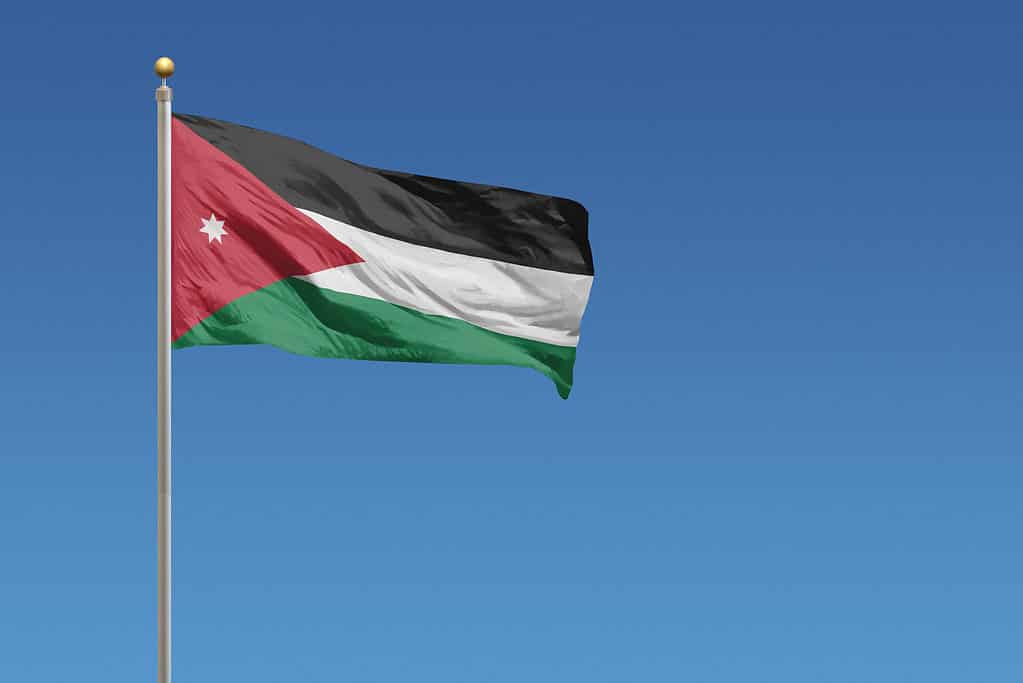The Hashemite Kingdom of Jordan, also known as Jordan, is a Middle East country surrounded by the Palestinian National Authority and Israel to the west, the Red Sea to the south, Saudi Arabia to the east and south, Iraq to the northeast, and Syria to the north. With the county strategically located in the Middle East, it interconnects three continents – Africa, Asia, and Europe. This has made Jordan a major gameplayer in communications and trade, serving as the connector between the east and the west and the north and the south.
With a population of about 11 million inhabitants, Arabs make up the country’s major ethnic group, with Armenians, Circassians, Chechens, and others constituting the minor ethnic groups. And just as you might have guessed, Arabic is Jordan’s official language, while English comes next as the most widely spoken language.
There are many interesting facts about Jordan, and on top of the list is that a desert occupies about 75% of the country’s total land space. Then, we can also talk about its longstanding reputation as the bedrock of human civilization. Another peculiar feature about Jordan is its flag. You might be wondering what makes the country’s flag so unique. Read on to find out!
Founding of Jordan
You can trace Jordan’s history to the Paleolithic era, about two million years ago. The inhabitants of this area were primarily hunter-gatherers who moved from one place to the other in search of prey. However, these people started establishing agricultural communities and building permanent homes as time progressed.
Then, at the end of the Bronze Age, three large empires—Moab, Edom, and Ammon—came together to rule the country. Moving forward, Jordan was once a part of the Nabatean Kingdom, the Roman Empire, and the Ottoman Empire. They remained a part of the Ottoman Empire until it fell and was divided between England and France in 1916 during the first World War. Due to this division, Jordan became a British colony.
Fortunately for Jordan, the late Prince Abdullah bin Hussein arrived in 1920 and made the necessary arrangements to create the Jordanian state. Finally, on the 11th of April 1921, the first Jordanian government was formed, known as the Consultative Council. This council consisted of soldiers and officers who were members of the Great Arab Revolutionary Army, although this council was still subject to British authority.
Finally, in 1946, Jordan gained independence and was initially named the Hashemite Kingdom of Transjordan. Following the Arab-Isreali War of 1948, the country was renamed the Hashemite Kingdom of Jordan.
Characteristics of Jordan

There are several relics and ancient places scattered across Jordan that make it a target destination for tourists.
©iStock.com/Abdallah Abo-Elfadle
Jordan is a monarchical state with a representative government, and the current monarch is Majesty King Abdullah II. He functions as the head of state, the commander-in-chief of the country’s armed forces, and the chief executive. However, the king carries out his duties through the Prime Minister and the Cabinet, otherwise known as the Council of Ministers.
Another interesting feature of this desert nation is its deep history. We can attribute this to the fact that the country has its roots in the Paleolithic era. As a result, there are several relics and ancient places scattered across the country that make it a target destination for tourists. Some top attraction sites in Jordan are notable desert castles that can be found in places like Petra.
The state also features the Dead Sea, which is known as the lowest point on Earth. And in contrast, there’s also Jebel Umm El Dami, the highest point in Jordan. Overall, tourism makes up a significant part of the nation’s economy, which is great because it covers up for its limited natural resources.
Amman is Jordan’s capital and the largest city in the country. Dinar is the country’s currency.
History of Jordan’s Flag
The flag of Jordan can be traced back to the flag used during the Arab Revolt of World War I in 1917. This flag was reportedly created by Arabs from Istanbul based on a 13th-century poem and was also a significant part of the Ottoman Empire, which Jordan was once a part of. It was also used in Hejaz and the Kingdom of Iraq. However, at that time, the green and white stripes were reversed, and the white star wasn’t included.
When Abdullah bin Hussein became the monarch of Transjordan, he redesigned the flag and included the white star. This new design was officially adopted on the 18th of April, 1928, almost 20 years before the country’s independence. The flag continues to be the country’s flag even after independence in 1946. Jordan’s flag has a horizontal triband of green, white and black, with a red chevron at the hoist side and a white seven-pointed star at its center.
The Symbolism of the Flag of Jordan

The colors on the flag of Jordan symbolize the unity of Arab countries.
©iStock.com/Derek Brumby
The four colors on Jordan’s flag—black, white, green, and black—are the standard Pan-Arab colors used on other flags of Arab countries. This symbolizes the unity of Arab countries. The black, white, and green bands on the horizontal triband represent Abbasid, Umayyad, and Fatimid caliphates respectively. This flag is twice as long as the width.
Furthermore, the chevron at the hoist side signifies homage to the Arab Revolt and the Hashemite Dynasty. Finally, the seven-pointed white star is another symbol of unity, but it also represents the seven verses of Al-Fatiha. These verses include humanity, virtue, humility, faith in one God, national spirit, social justice, and aspiration. However, some believe the star also represents the seven hills on which the capital Amman is built.
Up Next:
- Animals in Jordan
- How Deep is the Jordan River?
- The Flag of Libya: History, Meaning, and Symbolism
- Countries with Striped Flags
- Every Flag In The World: Photos, History, and More
The photo featured at the top of this post is © iStock.com/Burak Ceyhan
Sources
- , Available here: https://jordan-travel.com/jordan-flag/
- , Available here: https://www.edarabia.com/jordan/flag/
- , Available here: https://www.memphistours.com/Jordan/Jordan-Travel-Guide/Jordan-General-Information/wiki/Jordan
- Joshua J. Mark, Available here: https://www.worldhistory.org/Jordan/
- , Available here: https://worldpopulationreview.com/countries/jordan/flag
Thank you for reading! Have some feedback for us? Contact the AZ Animals editorial team.






